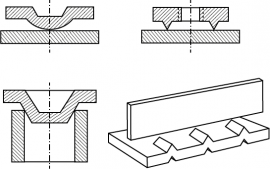Profimach® - EPW-Pressure welders Series
Microcomputer Precision Controlled AC Pulse Resistance Welding Machine
Profimach Pressure welding machines - Spot Welding Machines
Our Pressure/Spot-Welding machines are designed for applications that require more current and more force than standard equipment is intended. Our heavy-duty Spot-Welders use a very sturdy C-frame and can be considered as one of the most rigid on the market today.
Our Heavy-Duty Projection Type Resistance Welders are widely used by the metalworking industries today because of its extreme versatility. This general-purpose machine represents a new high achievement in welder design and engineering and embodies advantages which afford the greatest performance. Its modern design has incorporated ruggedness, accuracy, and reliable uninterrupted performance – all of which are of utmost importance to high production rate.
The main frame is high quality welded steel construction styled for trim appearance and functional design. The slim design requires a minimum of floor space. The upper arm extension is built integrally with the frame. The removable rear cover permits ready access to the frame interior for inspection and maintenance.
More info on our spotwelding equipment
Resistance welding processes our machines can handle
Depending on the shape of the workpieces and the form of the electrodes, resistance welding processes can be classified into several variants as described below:

Resistance Spot Welding
Spot welding is a resistance welding process for joining metal sheets by directly applying opposing forces with electrodes with pointed tips. The current and the heat generation are localized by the form of the electrodes. The weld nugget size is usually defined by the electrode tip contact area.
Spot welding is the predominant joining process in automotive industry for assembling the automobile bodies and large components. It is also widely used for manufacturing of furniture and domestic equipment etc.

Resistance Projection Welding
Projection welding is a resistance welding process for joining metal components or sheets with embossments by directly applying opposing forces with electrodes specially designed to fit the shapes of the workpieces. The current and the heat generation are localized by the shape of the workpieces either with their natural shape or with specially designed projection. Large deformation or collapse will occur in the projection part of the workpieces implying high process/machine dynamics.
Projection welding is widely used in electrical, electronics, automotive and construction industries, and manufacturing of sensors, valves and pumps etc.

Resistance seam welding
Seam welding is a resistance welding process for joining metal sheets in continuous, often leak tight, seam joints by directly applying opposing forces with electrodes consisting of rotary wheels. The current and the heat generation are localized by the peripheral shapes of the electrode wheels.
Seam welding is mostly applied in manufacturing of containers, radiators and heat exchangers etc.

Resistance Butt-Welding
Butt welding is a resistance welding process for joining thick metal plates or bars at the ends by directly applying opposing forces with electrodes clamping the workpieces. A forging operation is applied after the workpieces are heated up. Often no melt occurs, thus a solid state weld can be obtained.
Butt welding is applied in manufacturing of wheel rims, wire joints and railway track joints etc.
More pressure weldings
Single-Sided (One-Sided) Resistance Welding
Is a special resistance welding process where the weld is made with only one electrode accessing from one side to the weld zone with or without a backing plate from the other side. Low weld force is usually used, which limits the single-sided (one-sided) spot welding to joining of relatively thin sheets. It may be useful for welding components with limitation of electrode access from both sides.
Resistance Weld Bonding
Is a combined joining process with adhesive bonding and resistance welding. The adhesive is applied to the faying surfaces of sheets to be welded, and subsequently resistance spot weld is made through the sheets before curing of the adhesive. The joint can have good strength from the spot welding and good stiffness from the adhesive bonding.
Cross Wire Welding
Is a resistance welding process for joining bars or wires in cross joints by directly applying opposing forces with usually flat electrodes. The current and the heat generation are localized at the contact points of the crossed bars or wires. Cross wire welding is widely used in construction and electrical industry as well as for manufacturing of metal wire nets and shopping trolleys etc.
Indirect Welding
Is a special resistance welding process where a single weld is made with one electrode directly connecting to the weld zone, while the other electrode is offset at a distance, but still conducts the current along the workpiece.
Series Welding
Is a special resistance welding process where two welds are made at the same time with two electrodes offset at a distance but still conducting the current along the workpieces between the two welds.
Micro Resistance Welding
Refers to the resistance welding processes for joining micro or miniaturized components, which in principle can be any of the above mentioned process variants but in a micro scale.

